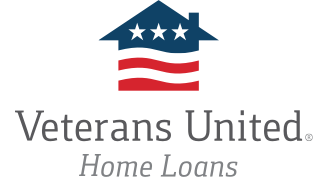How Pest Inspections Can Impact Your VA Loan
The last thing you want as a homeowner is to learn your home has a pest infestation once it's too late. Learn about VA home loan pest inspection requirements in your state.
For VA homebuyers, pest inspections help confirm there is no serious infestation or structural damage caused by pests, mainly termites, at the property they hope to purchase. Unlike a home inspection, which is always optional, there are times when pest inspections are required to close on a VA loan.
We’ve put together a list of the most commonly asked questions about how pest inspections can impact your VA loan, and which states require them, so let’s dive in.
Do I have to get a pest inspection with a VA loan?
In more than 30 states, a termite inspection is required for homes purchased with a VA loan. A good rule of thumb is to look at a Termite Infestation Probability Map and see if your home falls in the “moderate to heavy” or "very heavy" areas.
VA Pest Inspection Rules By State
Most of the country falls in the moderate to heavy probability, with only the Northern states considered reasonably safe from termites. Let’s go state-by-state to see if your state falls within the “safe” zone.
States that do not require a pest inspection for a VA loan include:
- Alaska
- Idaho
- Maine
- Michigan
- Minnesota
- Montana
- New Hampshire
- North Dakota
- Oregon
- South Dakota
- Vermont
- Washington
- Wisconsin
- Wyoming
If you do not reside in one of these states, termite inspections are not automatically required by the VA.
States with Mixed Termite Infestation Probability
Some states contain a mix of termite probability zones, with southern portions of the state falling in the moderate category, and northern parts of the state falling in the light probability category.
States falling into mixed probability for pests includes:
- Colorado
- Iowa
- Nebraska
- Nevada
- New York
- Utah
In these states, the pest inspection requirement may depend on which county the property is located in.
How the VA Pest Inspection Works
As we’ve just discussed, the VA pest inspection will be automatically required for properties located in “heavy” or “moderate” termite probability areas. Additionally, a pest inspection may be ordered if an independent VA appraiser finds any sign of pest or termite infestation.
Once the inspection is ordered, an independent inspector will visit the property to determine whether there is an active infestation. They will also determine the extent of any damage from an infestation, past or present. The inspector will document their findings in a report, which will be submitted to the VA.
If there is an active infestation or damage, the issue will need to be addressed before your lender can fund the loan. The VA doesn't specify who is responsible for paying for pest control or treatment of termite damage, so buyers and sellers will need to negotiate this cost on a case-by-case basis.
Cost of a Pest Inspection
Pest inspection costs vary based on location, the size of the home and other factors. In most cases, the fee falls between $50 and $200.
Who Pays For The Pest Inspection?
As of June 15th, 2022, buyers are allowed to pay for their own termite inspection if the inspection is required by the VA appraiser in the Notice of Value. Previously, only buyers in specific states were allowed to pay for the inspection, so sellers were often asked to cover the fee.
Who pays for the pest inspection on a refinance?
Typically, Veterans getting a VA streamline refinance will not need a pest inspection at all. If you’re doing a VA cash-out refinance, an appraisal may be needed, which could lead to a VA-mandated pest inspection. In that case, you will likely need to cover the fee of the pest inspection prior to closing.
How Long Is the VA Pest Inspection Good For?
Your VA pest inspection report is typically valid for 90 days from the date of the inspection. Most VA loans close in 30 to 45 days.
Are Any Other VA Loan Inspections Required?
While home inspections are not required, all VA loan properties must be reviewed by a VA appraiser to make sure they meet the Minimum Property Requirements, which include conditions like:
- Safe access to the property.
- A roof in good condition. There cannot be any active leaks, and the roof should be in good enough condition that there is no immediate need to replace it.
- A sanitary waste disposal system. All plumbing must be in working order.
- Safe electrical system and adequate heating. The electrical work must be up to code and the heating must be working properly.
Conclusion
The VA home loan program provides a favorable path to homeownership for military service members and Veterans. Between the 0% down payment, low-interest rates and PMI avoidance, there’s a lot to love about VA loans.
But they do have strict property requirements that must be met before the VA will back your loan. And because pest infestations can damage the structural integrity of a home, the VA needs to be reasonably sure there is no active infestation or damage from previous infestations.
The pest inspection is quick and inexpensive, but it provides a level of protection for you and your new real estate investment.


